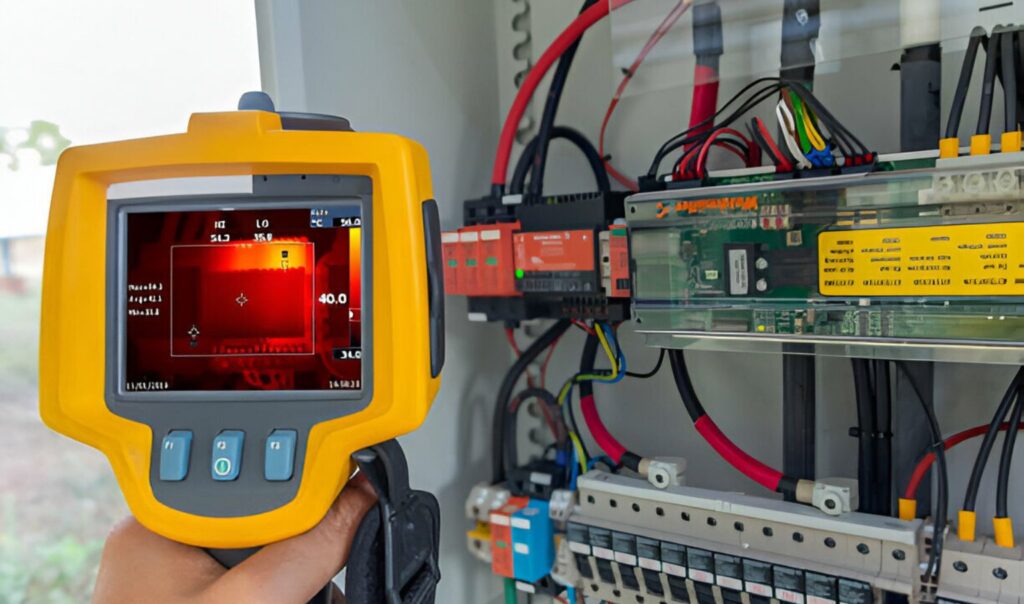Are you concerned about the hidden issues lurking within the walls of your home?
Then, you don’t need to look further than thermography inspections. These inspections are a full package that gives you the disclosure of your home’s condition. A cherry on top is thermography inspections that identify potential issues that may not be visible to the naked eye.
With thermography inspections, you can detect issues ranging from water leaks to insulation deficiencies. Also, saving these issues from turning into costly repairs.
This blog will discover how thermography inspections provide you with peace of mind. We’ll also cover how these inspections help maintain a comfortable, energy-efficient home.
Read on to learn how thermography uncovers hotspots and cools down your worries, one scan at a time.
Let’s Talk About Thermography Inspections
As the name suggests, these inspections involve thermal (infrared) phenomena. These use infrared technology. It detects and visualizes temperature differences on the surface of objects or structures.
After capturing and analyzing thermal images, these inspections identify anomalies in temperature distribution. This indicates underlying issues like:
- Electrical problems
- Insulations deficiencies
- Water leaks
- Mechanical failures
It won’t be unfair if we credit these inspections as a blessing in disguise. They provide invaluable insights into the condition and performance of various systems. With these, you can do proactive maintenance and make timely repairs to prevent costly damage or downtime.
What Are the Advantages of Thermography Inspections?
Non-Destructive
Homeowners often worry about whether the inspection will harm the inspected materials and structures. With thermography inspection, this is rather promised. It follows the modern inspection practices that ensure the integrity and no harm.
Unlike traditional inspections, thermography inspections need no physical contact or invasive procedures. The use of infrared technology is what lets these inspections remain intact. Now, there are various ways in which you can benefit from these inspections’ non-destructive approach.
Firstly, there won’t be any risk of damage to the asset. This will preserve its integrity and minimize the need for costly repairs or replacements. Eventually, this leads to minimizing the need for costly repairs or replacements.
Secondly, the non-destructive nature results in quick and efficient performance. This allows for thorough assessments. Not only this, but it also allows the inspectors to access hard-to-reach areas safely. This results in reducing the risk of injuries or accidents.
Early Detection
Thermography inspection gives you a heads-up by identifying potential issues at their early stages. This allows for timely intervention and preventive measures. After capturing and analyzing thermal images, these inspections reveal subtle temperature variations. These may highlight underlying problems. Detecting these issues early enables you to take proactive maintenance measures. This also helps address these problems before they become more serious and costly.
Thermography inspections are a proactive approach. This minimizes the downtime and reduces the risk of unexpected failures. But, most importantly, it extends the lifespan of structures and equipment. Furthermore, early detection also helps in enhancing safety. This is because these inspections help mitigate potential hazards before they become a major threat.
Comprehensive Analysis
Thermography inspection with comprehensive analysis allows for a detailed understanding of your property. These don’t work like traditional inspections that provide surface-level assessments. In fact, these use IR technology to capture thermal images of the entire surface being scanned.
Now, this allows for detecting hidden anomalies or defects that the naked eye might miss. After analyzing these images, inspectors identify potential issues. And this provides a holistic view of the inspected area.
This lets you decide on a better maintenance plan, ensuring all potential problems are addressed effectively. Also, the detailed insights from thermography inspections help in optimizing maintenance strategies. This leads to various factors like:
- Improved reliability
- Improved efficiency
- Improved safety
Types of Thermography Inspection Devices
Your inspector might use different types of IR sensing devices in an on-site inspection. Some of those are as follows:
Spot Radiometer
This is also called a point radiometer. It’s the simplest device that an inspector might use. The radiometer measures the radiation one spot at a time (hence the name). The results are presented as simple meter readings that show the temperature at the time of the given spot. The inspector pans the area and then notes the temperature differences.
Thermal Line Scanner
This device is used to show radiant temperature that is viewed along a line. The thermogram displays the line scan overlaid onto an image of the surveyed area. It reveals temperature fluctuations along the line.
Thermal Imaging Camera
It is the most accurate device used in thermographic inspections. The camera produces a 2D thermal picture of an area that indicates heat leakage.
Spot radiometers and thermal line scanners are not fulfilling devices for the details needed for a complete energy inspection. So, using a thermal imaging camera becomes important when inspecting a property.
How to Prepare for a Thermography Inspection?
The homeowner should take the appropriate measures to guarantee an accurate result before conducting an interior thermal scan. This may involve removing drapes and moving furniture away from the exterior walls.
When there is a significant temperature differential (at least 20°F [14°C]) between the air temperatures inside and outside, thermographic images are typically the most accurate. Thermographic scans usually take place in the winter in northern states. However, scans are often carried out in warm weather with the AC turned on in southern areas.
Depending on local conditions, it may be necessary for the homeowner to create and maintain a specific inside/outside temperature difference. This is needed for up to four hours before the test at specific times of the year because of a phenomenon called “thermal loading.” This can be done by turning on the central heating system in winter or the air conditioner in summer. Before the test, ask the auditor if this is required.
Conclusion
Getting a thermography inspection is one of the best ways to know about the hidden issues in your house. These aren’t just ordinary inspections; they provide an in-depth analysis of your house. Giving you thorough insights regarding your home’s condition. In fact, you also get the opportunity to handle maintenance issues. And plan a strategy to get ahead of costly and major problems.
While to get the best results from these inspections, schedule these inspections with a reputable company. Entrust Ally Property Inspections thermography inspections today for a safer tomorrow!


